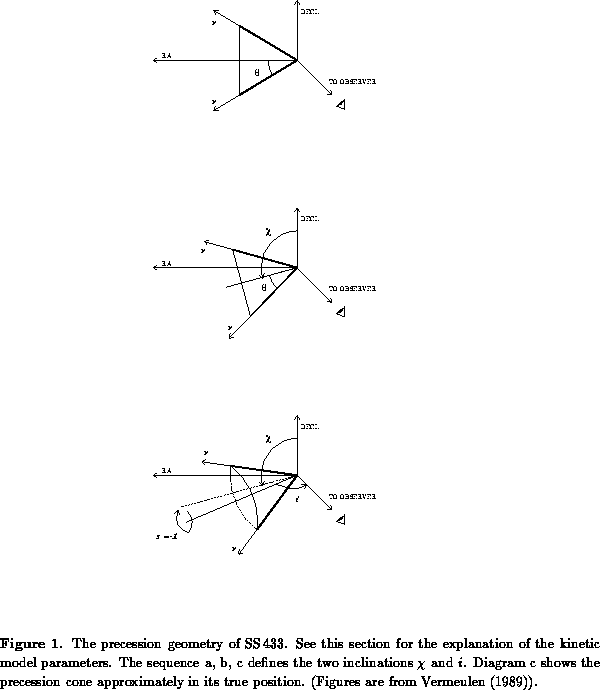Before we can go into more detail about the compact radio structure it is first nessesary to explain a proposed model of SS 433 which describes the full kinematics of the source. This ``kinematic model'' is a very useful tool for understanding and predicting in advance the kinematics of the ejected jets. Therefore one can predict with a high accuracy the observationable properties like precession period, magnitude, projected position angle of the cone, etc ...
The optical and infrared spectrum of SS433 both show two sets of highly
Doppler shifted emission line systems. These systems show changes in
wavelength on a daily interval. The extremes in radial velocities are
and
. In the kinematic model
the assumption is made that the two Doppler shifted lines are produces
in well collimated antiparallel beams. The periodic change in radial
velocity is explained by a rotation of the ejection axis. Since the
beams are antiparallel, one beam moves away from the observer (which
gives the redshifted spectral lines) and the other approaches the
observer (which gives the blueshifted spectral lines). This model was
given by Fabian and Rees (1979) and by Milgrom (1979). In order to fit
the observed radial velocities, the beams need a near-relativistic speed
of
.
In its simplest form the kinematic model is fully specified by 7 parameters. They are (as written by Vermeulen (1989)):

Radial velocity measurements can solve 5 parameters. and
can
not be determined in this way. Radio observations can be used to
calculate the tangential components of the outflow (Hjellming and
Johnston, 1981). The parameters as given by Vermeulen (1989) are:
